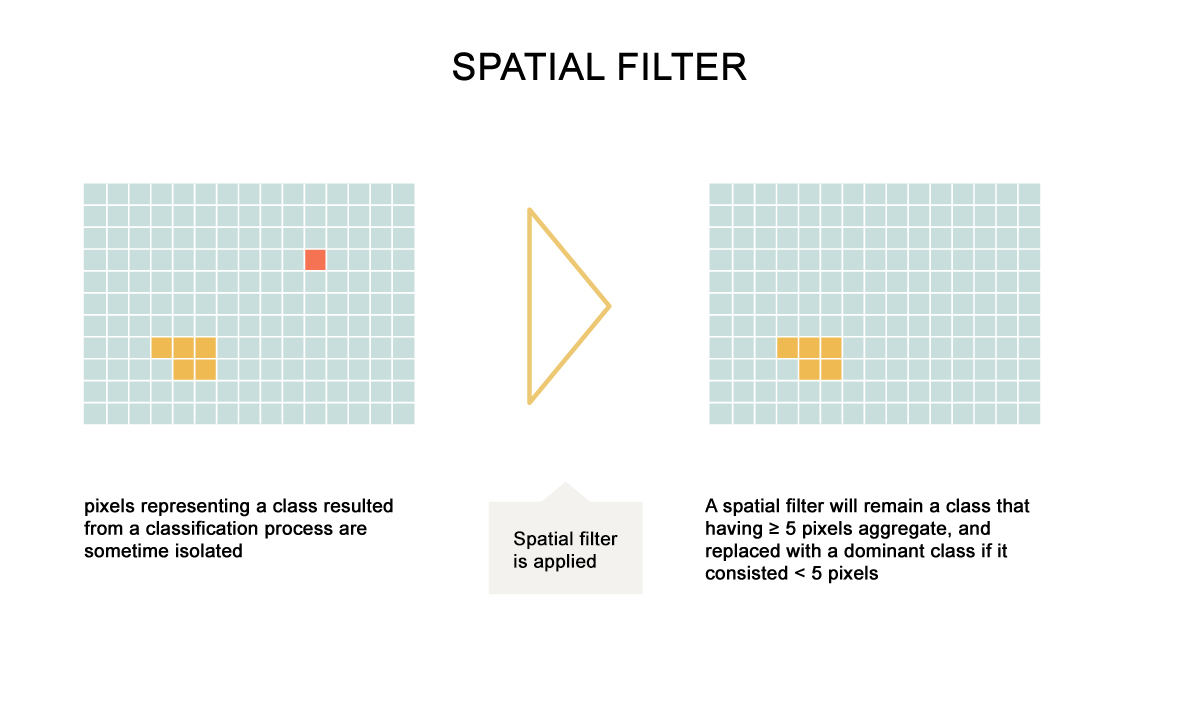MapBiomas Indonesia applied a post-classification process to stabilize the data and to reduce bias once the classification process was completed. The post-classification processes included the use of: a spatial filter; a temporal filter; a gap-fill filter; a frequency filter; and an incident filter.
Spatial Filter
The spatial filter was used to prevent changes in classification values in groups of pixels. The filter is made based on “connectPixelCount” where the function would position connected pixel components with the same pixel values. This filter requires at least five connected pixels as a minimum connection value.

Temporal filter
The temporal filter was used to identify unwanted transitions occurring over three to five years. The filter would examine and change the central position of non-sequential pixels for reclassification according to prior and subsequent classes.

Gap-Fill Filter
In producing Landsat mosaics, areas containing clouds or shadows were often recorded as ‘no-data’ during the classification process. A gap-fill filter was applied to fill areas recorded as ‘no-data’ with data based on the previous year’s land-cover for the same pixel.
Frequency filter
The frequency filter considered the occurrence of a particular class across the time series. All class occurrences with a persistence of less than 10% were filtered and classified as non-class.
Incident filter
The incident filter was used to stabilize pixel values that changed too frequently over the 20 years. This usually occurred at boundaries between classes. Pixel values that had changed more than eight times were replaced by stable pixel values in the time series.